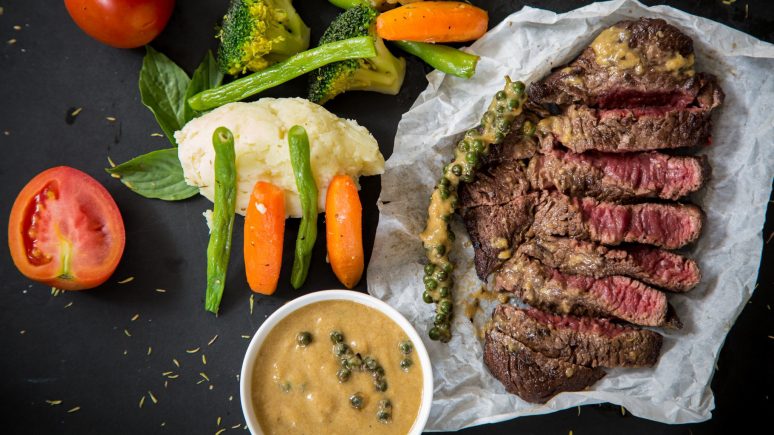Introduction
Have you ever wondered how different our diet is from our ancestors’?
The paleo diet is a dietary pattern based on the eating habits of people during the Paleolithic era. It promotes eating foods that can be gathered or hunted, including fruits, vegetables, seeds, nuts, fish, and lean meat. This diet excludes grains, legumes, sugars, dairy products, salt, coffee, alcohol, and processed oils.
Some researchers propose the evolutionary discordance hypothesis. It is based on the idea that the modern diet changed with the development of farming doesn’t suit the human body genetically. However, this hypothesis is arguable and more research is needed in this area.
According to some studies, the paleo diet is associated with decreased risk of heart diseases, obesity, and type 2 diabetes and may promote weight loss. However, it is essential to mention that more research is still needed.
Key points
The Paleo diet can be very different since people in the Paleolithic era didn’t have strict nutritional rules. Therefore, the following are general guidelines that you can adapt to your preferences and needs.
Foods to avoid:
- processed foods
- legumes
- grains
- dairy products
- refind sugar
- artificial sweeteners
- refined vegetable oils (for example, canola oil, soybean oil, sunflower oil, etc.)
- potatoes and other starchy vegetables
- coffee
- salt
Foods to eat
If you want to follow the Paleo diet, you should base your meals on whole foods, including:
- fruits and non-starchy vegetables
- nuts
- seeds
- fish and seafood
- meat
- poultry
- eggs
- healthy fats and some vegetable oils (extra virgin olive oil, avocado oil, etc.)
- spices
Nowadays, modified versions of the Paleo diet can be found. They include some healthy foods like gluten-free grains and quality grass-fed butter that wasn’t a part of people’s diet in the Paleolithic era. It confirms that the Paleo diet is not a strict set of rules but more like a template.
Contraindications
Patients with chronic health conditions such as heart disease or kidney disease, type 2 diabetes, and risk of osteoporosis should consult the doctor before following the Paleo diet. In addition, pregnant and breastfeeding women and children should be precautious with this diet and talk to the healthcare provider before starting it.
How to avoid possible nutritional deficiencies
People following the Paleo diet may experience deficiencies in some key nutrients, including calcium, vitamin D, magnesium, and iodine. To ensure you fulfill the body’s requirements for these compounds, try to include some of the following foods in your diet:
- calcium: salmon, leafy greens, seeds (chia seeds, poppy seeds, celery seeds, sesame seeds);
- vitamin D: salmon, tuna, swordfish, egg yolk, beef liver;
- magnesium: avocado, leafy greens, bananas, almonds, Brazil nuts, cashew, chia seeds, pumpkin seeds, flaxseeds, salmon, mackerel;
- iodine: seaweed, chicken, eggs, beef liver, shrimps, cod, shellfish.
An alternative way of ensuring that you get enough of these nutrients is by taking supplements. Consult with the doctor or nutritionist to be advised about specific supplements you may need.
Tips on improving your dieting experience
At first glance, it seems like the variability of meals on the Paleo diet is very limited. However, many delicious recipes can be found on the websites dedicated to this nutritional approach.
Here we provide you with healthy Paleo snack ideas that you can incorporate into your diet to make it more diverse:
- whole fruits
- banana boats with nut butter
- avocado stuffed with egg salad
- egg salad stuffed tomatoes
- seaweed chips
- sweet potato zucchini tots
- smoked almonds
- coconut yogurt with berries
- collard green spring rolls
- meat jerky
- sweet potato avocado toast
- vegetable chips
- Paleo almond crackers
Conclusions
The Paleo diet is based on the eating habits of our ancestors who lived during the Paleolithic era. It may possess some health benefits by encouraging eating whole foods and avoiding processed ones. However, many people find this diet highly restrictive since numerous food groups are eliminated. In addition, if you want to follow the Paleo diet, you should be prepared that the grocery bills will increase because organic products and grass-fed meat are usually more expensive.














Leave a Reply
You must be logged in to post a comment.